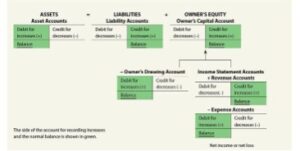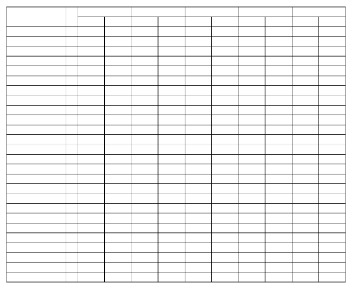10 4 Flexible Budgets Financial and Managerial Accounting
22 April 2021Enter actual activity measures into the model after an accounting period has been completed. Flexible budgets are essentially budgets that can be adjusted depending upon revenue and cost changes throughout the fiscal year, accounting for expected unpredictability. Companies first account for the fixed costs they expect, or at least costs that they don’t expect to change as the year progresses. They then allow for fluctuating variable costs, reviewing costs periodically to make real-time adjustments. In a flexible budget, there is no comparison of budgeted to actual revenues, since the two numbers are the same. The model is designed to match actual expenses to expected expenses, not to compare revenue levels.
- Actual results are compared to the static budget numbers as one means to evaluate company performance.
- Suppose the budget was set up with the expectation that sales would be $200,000 per month and labor cost was budgeted at $50,000 per month, or 25 percent of sales.
- For costs that vary with volume or activity, the flexible budget will flex because the budget will include a variable rate per unit of activity instead of one fixed total amount.
- This approach varies from the more common static budget, which contains nothing but fixed amounts that do not vary with actual revenue levels.
- Variable costs can include marketing and sales, and may also include the cost of materials, number of sales, and shipping costs.
- In addition, NetSuite makes it possible to run what-if scenarios to help you see what could happen in the best- and worst-case scenarios.
A flexible budget, on the other hand, is a series of budgets prepared for various levels of activities, revenues and expenses. Flexible budgets get modified during the year for actual sales levels, changes in cost of production and virtually any other change in business operating conditions. This flexibility to adapt to change is useful to owners and managers.
What Is a Flexible Budget?
We can calculate the flexible budget for any level of activity using these figures. Leed Company prepares a flexible budget for 70%, 80%, 90% and 100% capacity. Notice how the variable costs change with volume but the fixed costs remain the same. Some companies have so few variable costs of any kind that there is little point in constructing a flexible budget. Instead, they have a massive amount of fixed overhead that does not vary in response to any type of activity. In this situation, there is no point in constructing a flexible budget, since it will not vary from a static budget.
They take into account that a business is an organic, growing system and that life is not predictable. These points make the flexible budget an appealing model for the advanced budget user. However, before deciding to switch to the flexible budget, consider the following countervailing issues. The devil’s in the details, so keep the first page high level. In budgeting meetings, McFall frequently sees people getting into minutiae that have nothing to do with the overall evolution of the budget or the financial health of the company. Still, flexibility is incredibly important for young companies.
Definition and Examples of a Flexible Budget
For example, suppose a proposed sale of items does not occur because the expected client opted to go with another supplier. In a static budget situation, this would result in large variances in many accounts due to the static budget being set based on sales that included the potential large client. A flexible budget on the other hand would allow management to adjust their expectations in the budget for both changes in costs and revenue that would occur from the loss of the potential client. The changes made in the flexible budget would then be compared to what actually occurs to result in more realistic and representative variance. This ability to change the budget also makes it easier to pinpoint who is responsible if a revenue or cost target is missed. A static budget is one that is prepared based on a single level of output for a given period.

For control purposes, the accountant then compares the budget to actual data. As mentioned before, this model is a much more hands on and time consuming process requiring constant attention and recalibration. Flexible budgets work by taking the pressure off to predict future happenings.
Join PRO or PRO Plus and Get Lifetime Access to Our Premium Materials
For example, if your business predicts that five units will sell per month at $5 each, you can expect a revenue of $25 a month. Creating a budget, even one that’s not constantly evolving, can be an overwhelming to-do on the never-ending checklist facing leaders of emerging businesses. Cash is the lifeblood Flexible Budgets of any business — and allocating it effectively is integral to success. It can also be calculated as per-unit variable cost over the per-unit sales cost, or $.75 / $3. When people know there’s not an iron-clad expectation to stay within a static line item, there’s temptation to constantly ask for more.
- These points make the flexible budget an appealing model for the advanced budget user.
- These changes can be due to variations such as changing inventory costs, supply chain concerns, and market conditions.
- Let’s suppose the production machinery had to operate for 4,500 hours during February.
- The flexible budget offers the most customizable experience, allowing it to be easily adopted by many different businesses.
- If March has 4,100 machine hours, the flexible budget for March will be $81,000 ($40,000 fixed + $10 x 4,100 MH).
Historically financial modeling has been hard, complicated, and inaccurate. The Finmark Blog is here to educate founders on key financial metrics, startup best practices, and everything else to give you the confidence to drive your business forward. No matter which type of budget model you choose, tracking your finances is what matters most. Now, let’s assume that it costs one dollar to make each unit of product, so you budget $5 a month for this.
It also knows that other costs are fixed costs of approximately $40,000 per month. Typically, the machine hours are between 4,000 and 7,000 hours per month. Based on this information, the flexible budget for each month would be $40,000 + $10 per MH. More than likely, you dutifully prepare a static budget each year and put it in your desk drawer – and it’s not seen again until it’s time to prepare a new budget. Flexible budgets have distinct advantages over static budgets. After you get used to flexible budgets, they will become one of your favorite management tools.
- A flexible budget is a revised master budget based on the actual activity level achieved for a period.
- Imagine your product goes viral on social media and gains unexpected popularity overnight, now there is a demand for 20 units next month, which would cost $20 to make.
- Flexible budgets offer close monitoring of expenses versus revenue, and they allow for the opportunity to test things out and see what might work and what won’t without rigid financial constraints.
- A sophisticated flexible budget will change the proportions for these expenditures if the measurements they are based on exceed their target ranges.
- Flexible budgets get modified during the year for actual sales levels, changes in cost of production and virtually any other change in business operating conditions.
This represents your best guess at what will be spent and what will be earned. Revenues and expenses are constantly adjusted in https://kelleysbookkeeping.com/federal-insurance-contributions-act-fica/ for current operating conditions. New environmental regulations might increase the costs of production and could require the purchase of different types of machines. Weather conditions could increase shipping costs and result in delayed shipments to customers. Variable expenses in flexible budgets are defined as percentages of sales.
Suppose material costs for a product suddenly increase during the year, making this item unprofitable. A flexible budget would spot this variance, and management could take corrective actions. It might be a price increase or an effort to find cost savings in manufacturing expenses. With static budgets, costs of operations and product profit margins are set at the start of the year, based on historical data.

The above scenario is the initial budget assuming 100% activity. However, to see these numbers in action, let’s say, hypothetically, a pandemic hits. The coffee shop’s activity is then reduced to 70% of what was expected.
In short, a flexible budget requires extra time to construct, delays the issuance of financial statements, does not measure revenue variances, and may not be applicable under certain budget models. A flexible budget can be created that ranges in level of sophistication. In short, a flexible budget gives a company a tool for comparing actual to budgeted performance at many levels of activity. Then, upload the final flexible budget for the completed period into your accounting system so you can compare it with actual expenses through a variance analysis(opens in new tab). Flexible budgets are especially beneficial in volatile periods or unpredictable markets. The columns would continue below with fixed and variable expenses, allowing you to see how your net profit changes based on changes in actual production and revenue.
What is an example of a flexible budget?
An example of a flexible budget would be a business whose rent is always the same (a fixed cost) but whose inventory costs fluctuate (a varying cost) based on sales. The business could use a flexible budget to help plan its finances.